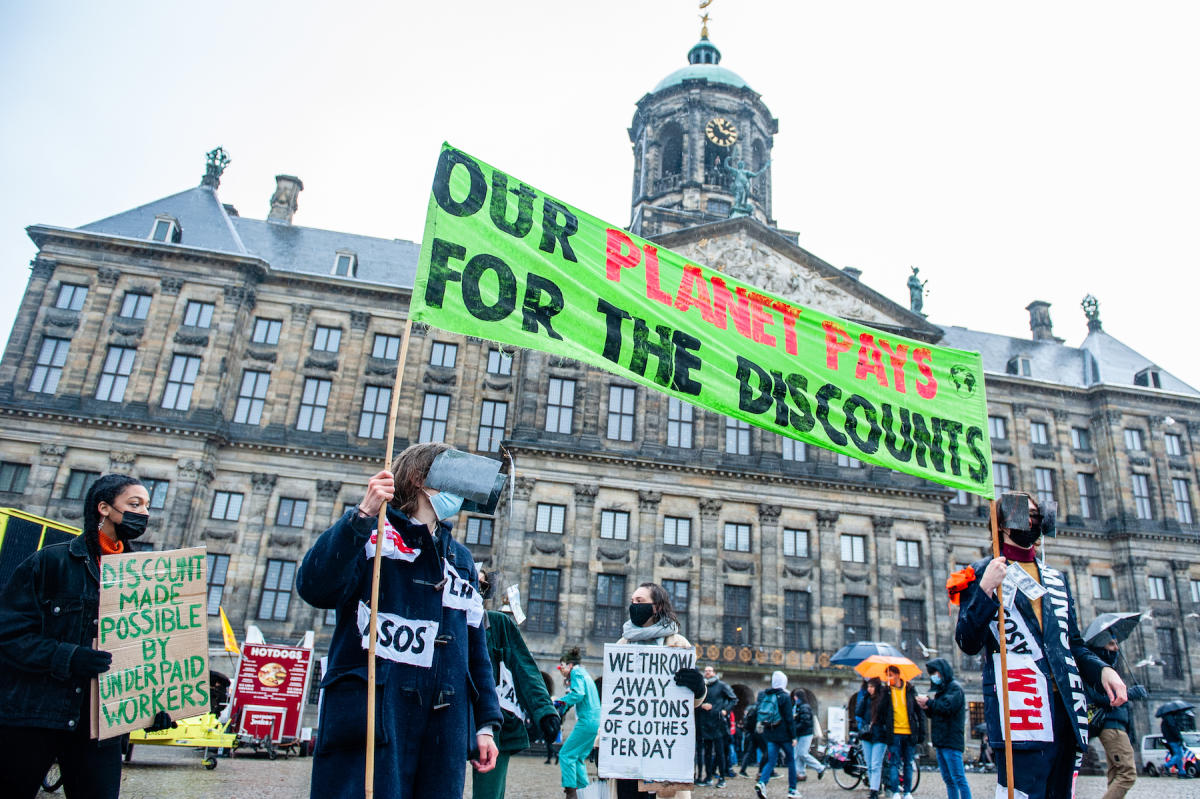Even though ultra-fast fashion garments are typically not of the highest quality, they’re being thrown out after a few wears regardless of the shape they’re in, Zero Waste Europe has learned.
The civil society organization received a leaked non-paper from European Union (EU) Member States addressing the impact of fast fashion, relevant to the upcoming Waste Framework Directive decision in the European Council occurring later this month.
More from Sourcing Journal
The informal document was drafted jointly by the ministries of Austria, Finland, France and the Netherlands for council negotiations. It states that the ultra-fast fashion products consumed in the EU are imported from third countries, thus increasing their environmental impact, threatening the EU’s economies and “hampering” the relocation of a circular textile industry in Europe.
If the EU is to achieve the ambitions of its action plan for a circular economy, it must “seize the opportunity” offered by the future sectoral regulations on textiles and fashion that are currently under discussion—such as the revision of the Waste Framework Directive or the delegated act pertaining to textiles in the ESPR regulation—and introduce “concrete measures” to combat the commercial practices of ultra-fast fashion into EU law.
“The support from France, Finland, the Netherlands and Austria for tackling fast fashion through the Waste Framework Directive negotiations is a pivotal moment in our fight against textile waste and resource depletion,” Theresa Mörsen, waste and resources policy officer at Zero Waste Europe, said. “These nations are taking the lead in addressing the core of the crisis: the sheer volume of textiles flooding the market.”
The in-session document (issued informally to facilitate negotiations) argues that it would be “essential” that the revision of the Waste Framework Directive include adjustments to account for ultra-fast fashion’s aggressive commercial practices, which encourage buyers to consume on impulse and do so in greater quantities.
Those Shein hauls have real-life consequences: Between 2000 and 2015, the number of new items put on the worldwide market doubled every year—rising from 50 billion to 100 billion and effectively doubling the textile industry’s carbon emissions—and if current consumption trends continue, the sector could be emitting 26 percent of all greenhouse gas emissions by 2050. Ultra-fast fashion exacerbates hyperconsumption, with some studies estimating that consumers throw away their cheap clothes after seven or eight uses, irrelevant to the intrinsic quality of the garment.
The adjustments to the directive, the non-paper said, could be based on various criteria, the most relevant being “the number of references placed on the market per unit of time and the frequency of renewal of textile collections coupled with a volume threshold of products per collection.” For example, the number of references placed on the market per unit of time is “highly differentiating” between different business models. This makes it possible to “effectively distinguish” traditional companies from fast-fashion companies and those from ultra-fast fashion companies.
“Setting thresholds will make it possible to distinguish between them and apply these modulations gradually,” per the document. “By way of example, the NGO Friends of the Earth estimates that some companies offer an average up to 470,000 product references in real time.”
The members also explained that, as the financial contributions would be based on individual projects and not on a group of projects, there’s no obstacle in introducing adjustments specific to the commercial practice of ultra-fast fashion. For starters, the adjustments contribute to implementing a system of producer responsibility based on the polluter pays principle, which makes the party responsible for producing pollution responsible for paying for the damages it caused to the environment. Modulating financial contributions to penalize the commercial practice of ultra-fast fashion would be “fully in line” with the implementation of this principle, considering these companies cause “significant negative externalities” for the national textile waste management sector.
“The ‘polluter pays principle’ must be upheld to shift our focus from merely managing waste to holding producers accountable,” Mörsen said. “EPR fees must be modulated based on product durability and the frequency of new collections to truly reflect the environmental cost.”
Not to mention, those commercial strategies have a “direct impact” on the extrinsic durability of products, the informal document said, by reducing their useful life—the principle of cultural obsolescence—which is seemingly in line with the current framework of Directive 2008/98/EC, which provides a legal framework for the treatment of waste within the EU.
Plus, the EU has already broadened the modulation scope by moving away from the “strict logic” of linking it to the product and the resulting waste, as proven in regulation 2023/1542 on batteries. This stipulates that all batteries placed on the European market are sustainable and safe throughout their life cycle and that waste batteries provide for the financial contributions paid by producers to be modulated according to the battery’s carbon footprint. This approach is upheld in the proposed revision of Directive 2008/98/EC, considering that the contributions paid by producers of textile products are subject to extended producer responsibility (EPR) and may be modulated based on the eco-design requirements adopted under the ESPR regulation, including the carbon footprint.
“We urgently call on all member states to back this measure, ensuring that Producer Responsibility Organizations (PROs) enforce these standards,” Mörsen said. “The upcoming European Council decision on June 17 is critical, and we must seize this opportunity to drive towards a sustainable and responsible fashion industry.”

